Guwahati Tour Package: Unveiling the Gateway to Northeast India
Published on February 08, 2025
Guwahati Tour Package: Unveiling the Gateway to Northeast India
Nestled along the southern bank of the mighty Brahmaputra River, Guwahati stands as the vibrant gateway to Northeast India, offering visitors an unparalleled blend of ancient spirituality and modern urbanity. As the largest city in the region and the cultural capital of Assam, Guwahati serves as the perfect starting point for exploring the diverse tapestry of Northeast India's rich heritage. The city's strategic location makes it easily accessible through its well-connected Lokpriya Gopinath Bordoloi International Airport, while its efficient rail and road networks ensure seamless connectivity to other parts of the country.
The significance of Guwahati extends far beyond its geographical importance; it is a city where centuries-old traditions harmoniously coexist with contemporary development. This unique juxtaposition is evident in its skyline, where ancient temples stand shoulder-to-shoulder with modern skyscrapers, and bustling markets operate alongside sophisticated shopping malls. The city's historical roots run deep, dating back to the mythological era when it was known as Pragjyotishpura, or the "City of Eastern Light," serving as a crucial centre for Tantric practices and Vedic learning. For travellers seeking to explore this vibrant destination, a Guwahati tour package offers the perfect blend of cultural heritage, spiritual experiences, and modern attractions.

For travellers seeking an authentic Indian experience, Guwahati offers an irresistible combination of spiritual enlightenment, cultural immersion, and natural beauty. The city's religious significance is underscored by its numerous ancient temples, including the revered Kamakhya Temple, which draws pilgrims from across the nation. Meanwhile, its position on the banks of the Brahmaputra provides breathtaking views and opportunities for river-based activities that showcase the region's natural splendour.
As the commercial hub of Northeast India, Guwahati presents visitors with modern amenities and infrastructure while maintaining its distinct cultural identity. The city's markets brim with traditional Assamese handicrafts, silk products, and local delicacies, offering tourists a genuine taste of regional culture. From its vibrant festivals that celebrate everything from agriculture to music, to its warm hospitality that reflects the true spirit of Assamese culture, Guwahati encapsulates the essence of Northeast India in every aspect.
This remarkable fusion of tradition and modernity, spirituality and commerce, makes Guwahati not just a transit point but a destination in its own right, promising visitors an enriching experience that serves as the perfect introduction to the wonders of Northeast India.
Historical Tapestry and Cultural Heritage of Guwahati
Guwahati's historical narrative unfolds like a richly woven tapestry, spanning over two millennia of continuous human settlement and cultural evolution. Originally established as Pragjyotishpura during the 4th century CE under the Varman dynasty, the city served as the capital of the ancient Kamarupa kingdom, whose influence extended across much of present-day Northeast India. This period witnessed the construction of numerous temples and the establishment of Guwahati as a centre for Vedic learning and Tantric practices, foundations that continue to shape the city's spiritual landscape today.
The medieval era brought significant transformations as various dynasties, including the Pala and Koch rulers, left their indelible marks on the city's architecture and cultural fabric. The Ahom dynasty, which ruled Assam for six centuries beginning in the 13th century, particularly contributed to Guwahati's development, constructing several important temples and fortifications that still stand testament to their architectural prowess. The Navagraha Temple, built during this period, exemplifies the sophisticated astronomical knowledge and spiritual beliefs of the time.
Culturally, Guwahati represents a fascinating confluence of indigenous Assamese traditions and influences from neighbouring regions. The city has long been a melting pot of ethnic groups, including the Assamese, Bodo, Karbi, and various tribal communities, each contributing unique elements to the region's cultural mosaic. This diversity is vividly expressed through the city's vibrant festivals, traditional arts, and culinary heritage. The annual Ambubachi Mela at Kamakhya Temple and the Rongali Bihu celebrations showcase the city's deep-rooted spiritual and agricultural traditions.
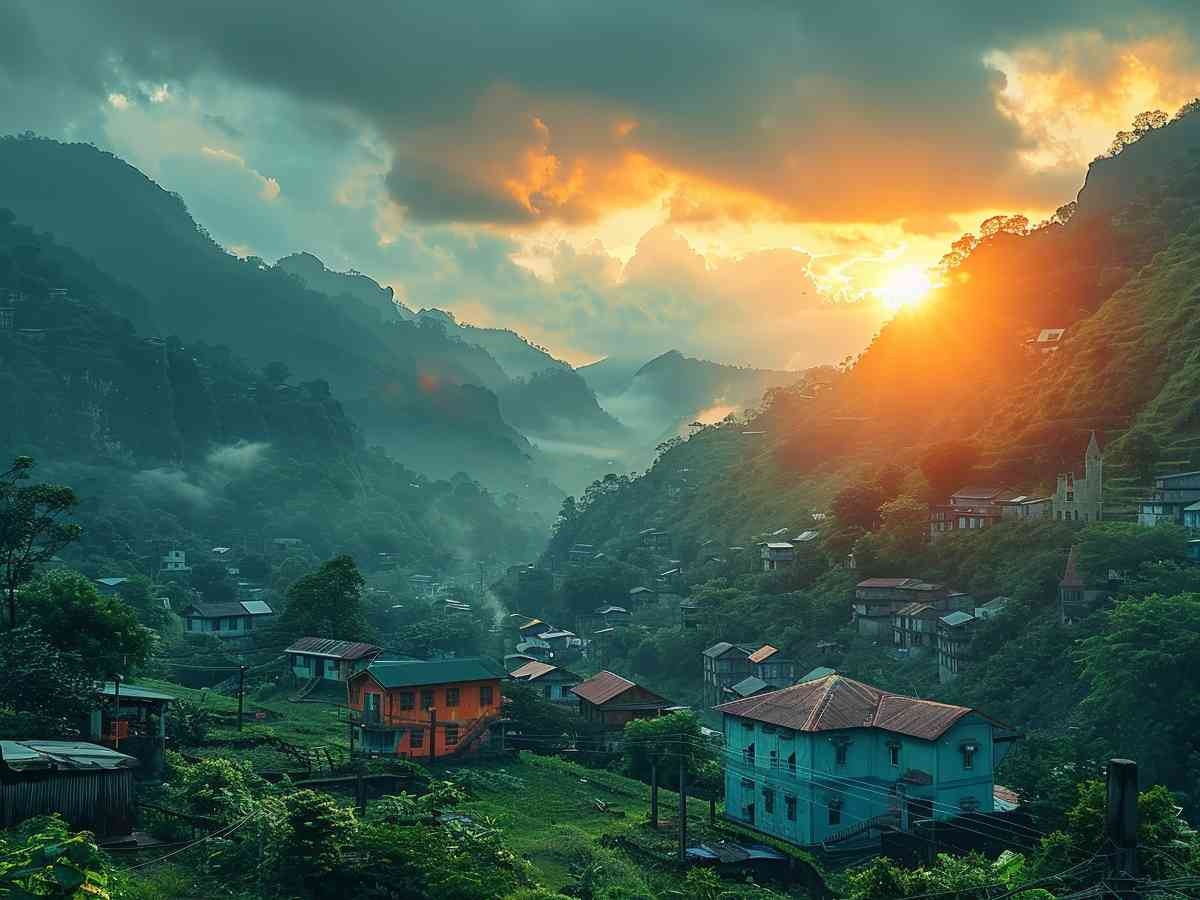
The colonial period introduced new dimensions to Guwahati's cultural landscape, with British influence manifesting in the city's educational institutions and administrative structures. Cotton College, established in 1901, became a beacon of modern education while preserving traditional values. This period also saw the development of tea plantations in the surrounding regions, which significantly impacted the local economy and social structure, introducing new cultural elements while simultaneously reinforcing traditional practices.
Today, Guwahati stands as a living museum of Northeast India's historical evolution, where ancient temples share space with modern infrastructure, and traditional bazaars operate alongside contemporary shopping centres. The city's museums, particularly the Assam State Museum, preserve and display artefacts that chronicle this rich historical journey, from ancient stone tools to colonial-era documents. This preservation of heritage, coupled with the city's dynamic growth, creates a unique environment where history isn't just remembered but actively lived through daily rituals, festivals, and cultural expressions.
Must-Visit Destinations in Guwahati
Guwahati's tourist landscape offers a captivating array of destinations that cater to diverse interests, from spiritual seekers to nature enthusiasts and cultural explorers. At the heart of the city's spiritual significance lies the Kamakhya Temple, perched atop Nilachal Hill. This ancient Shakti Peetha, dating back to the 8th-9th century, draws millions of devotees annually, particularly during the Ambubachi Mela. The temple complex houses several shrines dedicated to different forms of the goddess, while offering panoramic views of the Brahmaputra River below. Visitors should plan their visit early morning to avoid crowds and witness the mesmerising morning rituals.

The Umananda Temple, situated on Peacock Island in the middle of the Brahmaputra, presents another spiritual gem accessible by a short ferry ride. Known as the smallest inhabited river island in the world, it offers not only religious significance but also opportunities for wildlife spotting, including the endangered golden langurs. The best time to visit is late afternoon when the setting sun bathes the temple in golden light, creating spectacular photographic opportunities.
For those seeking tranquility amidst nature, the Assam State Zoo cum Botanical Garden spans 432 acres and houses over 895 animals representing 113 species. The zoo's highlight is its successful breeding program for endangered species like the one-horned rhinoceros. Adjacent to the zoo, the botanical garden features rare plant species and themed gardens, making it an ideal spot for family picnics and nature walks. Early mornings and late afternoons are optimal for visits, coinciding with animal activity and pleasant weather.
The Brahmaputra River itself offers multiple attractions, with the Sukreswar Ghat providing a serene riverside experience. This ancient bathing ghat, dating back to the 18th century, hosts evening Aarti ceremonies that create a magical atmosphere against the backdrop of the flowing river. Nearby, the Nehru Park offers beautifully landscaped gardens and children's play areas, while the Regional Science Centre combines education with entertainment through interactive exhibits.
For cultural immersion, the Srimanta Sankaradeva Kalakshetra serves as a cultural complex showcasing Assamese art, music, and dance forms. The open-air theatre and museum provide insights into the region's performing arts traditions, while the library houses rare manuscripts and literature. Evening performances of traditional Bihu dances and classical music concerts offer visitors authentic cultural experiences.
Nature lovers shouldn't miss the Deepor Beel Wildlife Sanctuary, a Ramsar site located just 13 kilometres from the city centre. This freshwater lake ecosystem supports diverse bird species, making it a paradise for birdwatchers, especially during winter migrations. The sanctuary's watchtowers provide excellent vantage points for observing both aquatic and terrestrial wildlife, while boat rides offer close encounters with the resident fauna.
Each of these destinations contributes uniquely to Guwahati's charm, whether through spiritual enlightenment, cultural enrichment, or natural beauty. The city's efficient public transport system, including auto-rickshaws and app-based cabs, ensures easy access to these sites, while local tour operators offer guided packages that combine multiple attractions for comprehensive experiences. Most sites maintain visitor-friendly facilities, including restrooms, food stalls, and souvenir shops, enhancing the overall tourism experience.
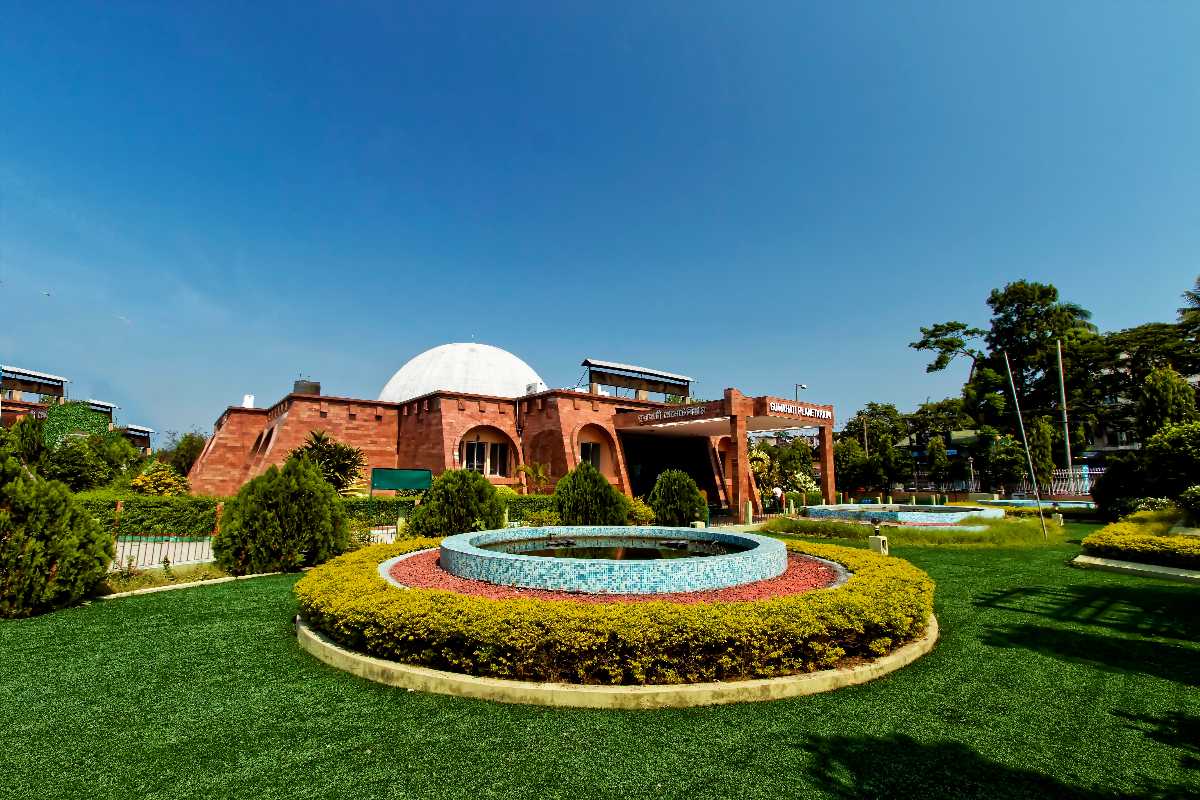
Experiencing Guwahati's Local Culture Through Culinary Delights
Guwahati's culinary landscape offers an authentic window into Assamese culture, where traditional flavours and modern adaptations create a unique gastronomic experience. The city's street food scene, particularly around Fancy Bazaar and Pan Bazaar, bursts with local specialities that reflect the region's agricultural abundance and indigenous cooking techniques. Must-try dishes include pithas (rice cakes) available in various forms – from til pitha filled with sesame seeds to ghila pitha fried in mustard oil. These traditional snacks, often prepared during festivals, showcase the Assamese preference for subtle flavours and minimal spice usage.
The morning markets come alive with vendors selling khar, a distinctive alkaline dish made from filtered water of sun-dried banana peels, typically combined with vegetables or fish. This signature Assamese preparation demonstrates the region's innovative use of local ingredients and traditional cooking methods. For a more substantial meal, visitors should explore tenga, a sour fish curry that perfectly balances tanginess with delicate spices, traditionally served with steamed rice. The presence of bamboo shoots in many dishes highlights the integration of forest produce in everyday Assamese cuisine.
Modern restaurants in Guwahati have successfully adapted traditional recipes to contemporary tastes while maintaining authenticity. Establishments like Heritage Khorikaa and KFC (Kathi Fusion Corner) offer innovative presentations of classic dishes, such as masor tenga tacos or pitha-inspired desserts. These venues provide air-conditioned comfort and English menus while preserving traditional cooking methods, making them ideal for international visitors seeking familiar dining environments.
Street food enthusiasts will find particular delight in the evening markets of Uzan Bazaar, where vendors serve hot bowls of jolpan – a traditional Assamese breakfast comprising flattened rice, curd, and jaggery. The accompanying side dishes of chutneys made from bhut jolokia (ghost pepper) and fermented bamboo shoots demonstrate the region's bold approach to flavours. For those seeking a complete cultural experience, many restaurants offer traditional seating arrangements on bamboo mats, accompanied by live performances of Bihu songs during meal times.
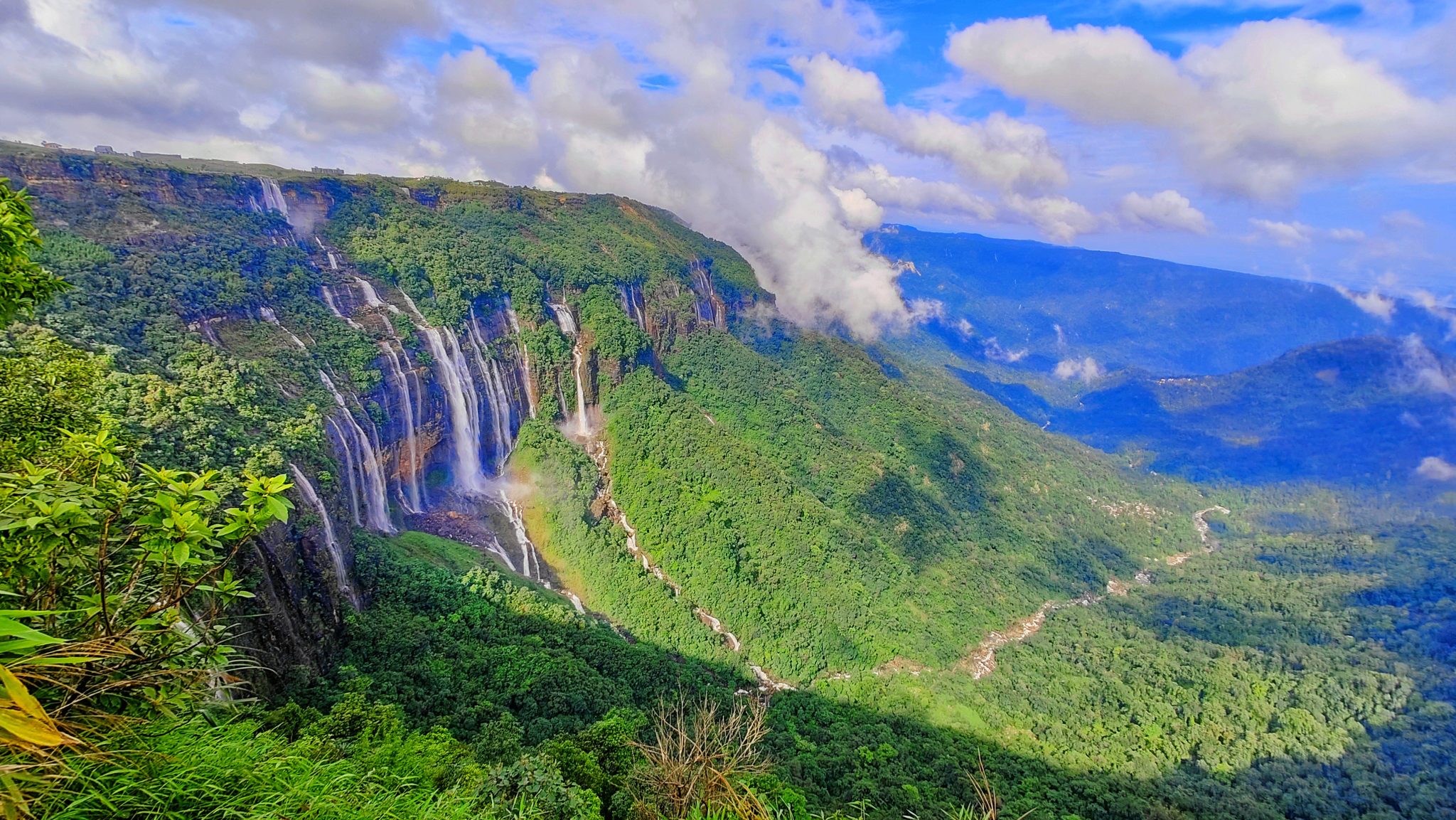
Local beverages deserve special mention, with lao-pani (rice beer) and kumoli (fermented drink) available in traditional settings, while modern cafes serve Assamese tea variants ranging from golden tips to silver needles. The city's food festivals, particularly during Bihu seasons, provide immersive experiences where visitors can participate in traditional cooking demonstrations and sample seasonal specialities prepared using age-old recipes passed down through generations.
Seasonal Considerations and Travel Planning for Guwahati
When planning a Guwahati tour package, understanding the city's distinct seasonal variations is crucial for maximizing your travel experience. The optimal visiting period spans from November to February, characterised by pleasant daytime temperatures averaging 20-25°C and cool evenings. During these months, the humidity remains relatively low, making outdoor exploration comfortable, while clear skies enhance visibility for sightseeing and photography. This period also coincides with major festivals like Magh Bihu and Saraswati Puja, offering visitors authentic cultural experiences.
The summer months from March to May bring higher temperatures ranging from 30-38°C, though early morning and late evening excursions remain feasible. This season witnesses fewer tourists, resulting in better accommodation rates and easier access to popular sites. However, visitors should prepare for increased humidity and occasional thunderstorms, particularly in May. Summer evenings along the Brahmaputra riverfront provide refreshing breezes, making it an ideal time for river cruises and waterfront dining experiences.
The monsoon season, extending from June to September, transforms Guwahati into a lush green paradise, though heavy rainfall can disrupt travel plans. While this period offers dramatic landscapes and lower tourist density, visitors should exercise caution regarding potential flooding, especially near riverbanks and low-lying areas. The post-monsoon period in October marks a transitional phase with moderate temperatures and clear skies, making it another favourable time for visits, particularly for wildlife enthusiasts, as animals become more active after the rains.
To navigate Guwahati efficiently, visitors should utilise the city's comprehensive transportation network. App-based cab services like Ola and Uber operate throughout the city, while metered taxis and auto-rickshaws provide affordable alternatives. The recently developed Guwahati Metro Rail system connects key areas, offering a convenient option for daily commutes between major tourist sites. For longer distances, well-maintained state highways and national highways ensure smooth road travel, while the city's proximity to the airport facilitates easy connections to other Northeast destinations.
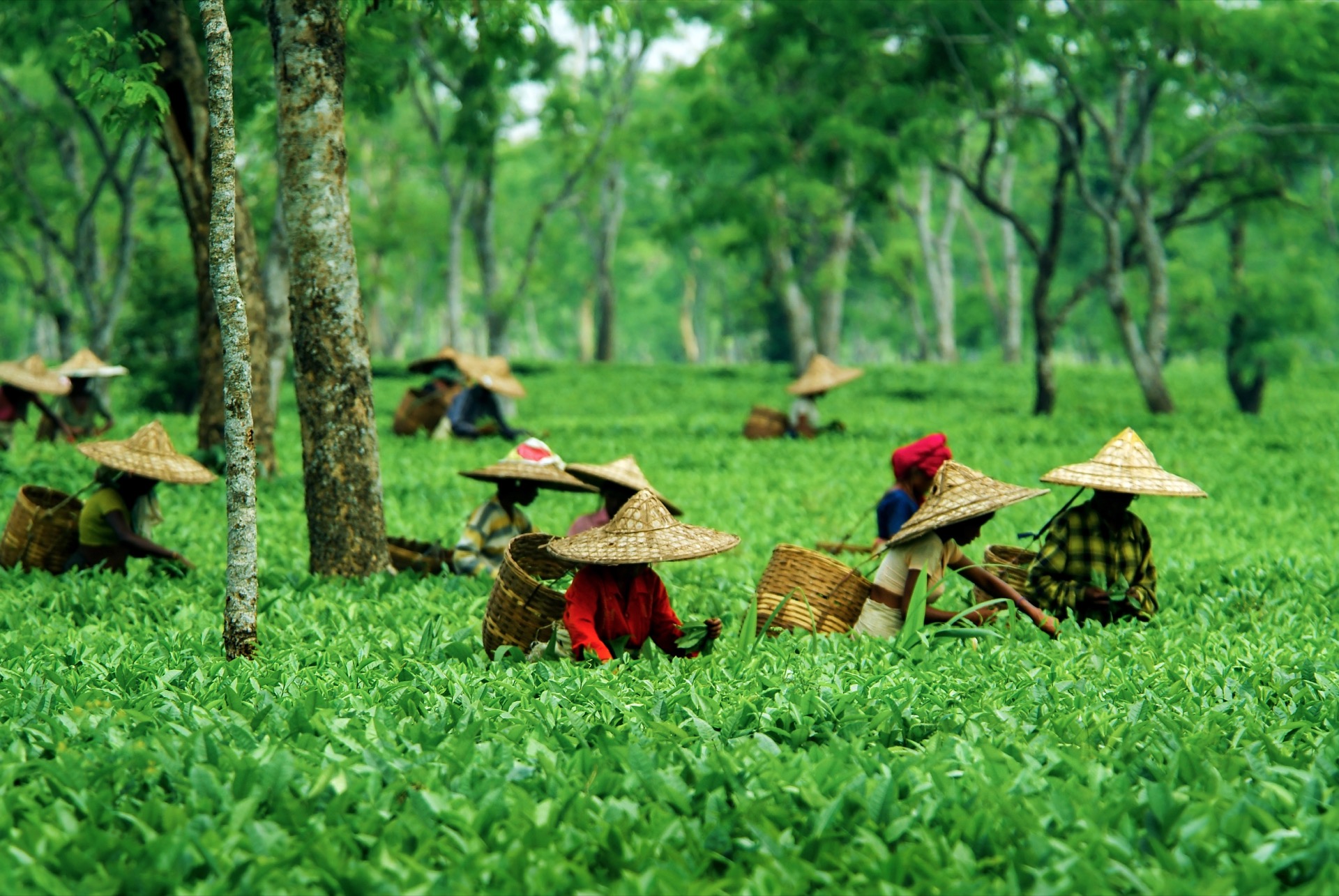
Practical travel tips include carrying lightweight cotton clothing for summer visits and warmer layers for winter months. Comfortable walking shoes are essential for temple visits and market exploration, while waterproof gear becomes necessary during monsoon season. Most tourist sites operate between 6 AM to 6 PM, with religious places typically closing for a few hours in the afternoon. Booking accommodations in advance, especially during peak seasons and festival periods, ensures better options and rates. Additionally, carrying small denominations of local currency proves helpful for transactions at smaller establishments and street vendors.
Understanding local customs enhances the travel experience – removing footwear before entering temples, dressing modestly at religious sites, and respecting prayer timings are essential considerations. Many establishments observe siesta hours during afternoons, so planning meals and shopping accordingly helps optimise daily schedules. For international travellers, language barriers rarely pose significant challenges as English is widely spoken in tourist areas, though learning basic Assamese greetings can enhance interactions with locals.
Crafting Your Perfect Guwahati Itinerary: Tailored Tour Packages
Creating an ideal Guwahati tour package requires careful consideration of duration, interests, and budget constraints. For first-time visitors with limited time, a 3-day itinerary offers a comprehensive introduction to the city's highlights. Day one should focus on spiritual exploration, beginning with an early morning visit to the Kamakhya Temple, followed by a trip to Umananda Temple via ferry. Afternoon hours can be spent at the Assam State Museum, while evenings can be reserved for riverside walks and enjoying local cuisine at Pan Bazaar. Day two should emphasise nature and wildlife, starting with a morning safari at Deepor Beel Wildlife Sanctuary, followed by an afternoon visit to the Assam State Zoo and Botanical Garden. The final day can be dedicated to cultural immersion, including visits to Srimanta Sankaradeva Kalakshetra and local markets for traditional crafts and textiles.
Budget-conscious travellers can opt for economical packages that combine public transportation with mid-range accommodations, while luxury seekers might prefer private vehicle transfers and premium hotels offering river views. Many local tour operators provide customised packages ranging from INR 5,000 to INR 20,000 per person for three days, depending on accommodation standards and inclusions. Mid-range options typically include stays at three-star properties like Hotel Rajmahal or Hotel Gateway Grandeur, while luxury packages feature five-star accommodations such as Vivanta Guwahati or Radisson Blu Hotel.
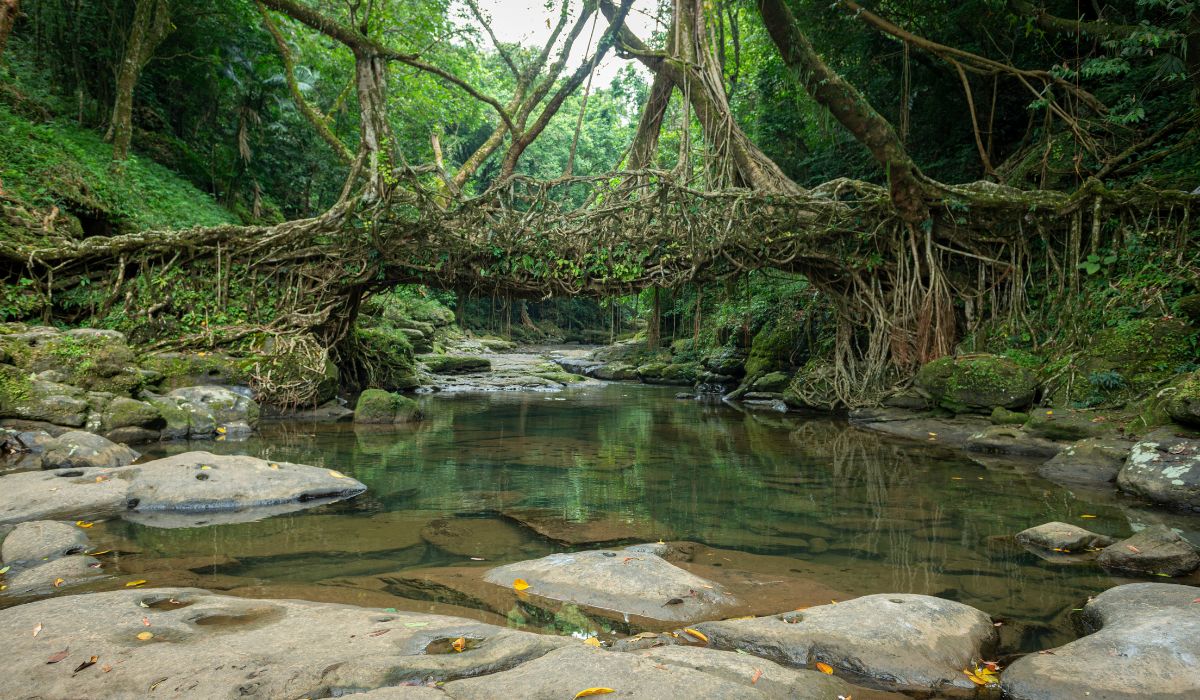
For extended stays of 5-7 days, visitors can incorporate day trips to nearby destinations like Hajo (24 km), known for its ancient temples, or Chandubi Lake (64 km) for eco-tourism experiences. These packages often include guided tours, entrance fees, and meals, with prices ranging from INR 12,000 to INR 40,000 per person. Special interest packages cater to specific preferences – spiritual tours focusing on temple circuits, wildlife enthusiasts targeting birdwatching spots, or cultural packages emphasising traditional arts and crafts. Family-oriented packages typically include child-friendly activities and spacious accommodations, while adventure-focused tours might incorporate river rafting or trekking experiences.
Several reputable tour operators, including MakeMyTrip, Thomas Cook India, and local agencies like the North East Tourism Development Council, offer standardised and customizable packages. When selecting a package, consider factors such as group size (private vs. group tours), meal preferences (vegetarian/non-vegetarian options), and activity levels. Many operators provide additional services like airport transfers, travel insurance, and photography assistance at extra costs. To ensure value for money, compare packages based on inclusions, cancellation policies, and customer reviews. Booking during off-peak seasons can yield significant discounts while guaranteeing more personalised experiences.
Conclusion: Embracing Guwahati's Transformative Travel Experience
Guwahati emerges as a destination that transcends conventional tourism, offering visitors a profound journey through time, culture, and spirituality. The city's unique position as Northeast India's gateway provides unprecedented access to the region's rich tapestry of traditions while serving as a vibrant urban centre that seamlessly blends ancient wisdom with modern progress. From the sacred corridors of Kamakhya Temple to the bustling markets of Fancy Bazaar, every corner of Guwahati tells a story of cultural continuity and adaptation, inviting travellers to become part of its living heritage.
The city's appeal lies in its remarkable ability to satisfy diverse traveller aspirations within a compact geographical area. Whether seeking spiritual enlightenment at ancient shrines, immersing in authentic Assamese cuisine, or exploring the region's natural wonders, Guwahati delivers experiences that resonate deeply with visitors. The Brahmaputra River, flowing majestically through the city, serves as both a physical and metaphorical thread connecting past and present, tradition and innovation, nature and urbanity.
For those contemplating a visit to Northeast India, Guwahati stands out as an essential starting point that offers far more than just transit convenience. Its well-developed infrastructure, combined with genuine warmth and hospitality, creates an environment where travellers can comfortably explore while feeling welcomed as honoured guests. The city's manageable size allows for thorough exploration without overwhelming visitors, while its strategic location enables easy extension to other regional destinations like Shillong, Kaziranga, or Majuli.

Ultimately, a visit to Guwahati promises more than just sightseeing – it offers a transformative experience that deepens understanding of India's diverse cultural landscape. The city's ability to preserve its authentic character while embracing modernity creates a dynamic environment where every interaction, from bargaining at local markets to participating in traditional festivals, becomes an opportunity for meaningful cultural exchange. For travellers seeking genuine connections and authentic experiences, a Guwahati tour package provides the perfect gateway to exploring the soul of Northeast India.
Best Time to Visit Guwahati
The best time to visit Guwahati is during the winter and spring months, from October to April. During this period, the weather is pleasant, the skies are clear, and the temperature is ideal for sightseeing and outdoor activities.
?️ October to March – Ideal for Tourism
-
Weather: Pleasant with temperatures ranging from 10°C to 25°C
-
Why Visit: Perfect for exploring temples, taking river cruises, and enjoying local festivals like Ambubachi Mela and Magh Bihu.
-
Highlights:
-
Kamakhya Temple visit
-
Brahmaputra River cruise
-
Pobitora Wildlife Sanctuary trip
-
City sightseeing without heat or humidity
-
? April to June – Warm but Manageable
-
Weather: Temperatures can rise to 35°C, with some humidity.
-
Why Visit: Less tourist crowd and beautiful spring blooms. Mornings and evenings remain comfortable.
-
Tip: Stay hydrated and wear light cotton clothes during daytime excursions.
?️ July to September – Monsoon Season
-
Weather: Moderate to heavy rainfall; lush green surroundings.
-
Why Visit (if at all): The city becomes picturesque, but travel plans can be disrupted due to rain and potential flooding.
-
Not Ideal For: Outdoor sightseeing or wildlife safaris.
For the best travel experience in Guwahati, plan your trip between October and April. Whether you're visiting for spiritual reasons, nature, culture, or just to explore Northeast India’s gateway, these months offer the most enjoyable weather and events.
9-Day Guwahati, Kaziranga, and Meghalaya Tour Itinerary
? Day 1: Departure
-
Departure from your nearest railway station or airport.
-
Overnight journey to Guwahati (Assam), the gateway to Northeast India.
? Day 2: Arrival in Guwahati
-
Arrival at Guwahati Railway Station / Airport.
-
Check in at the hotel and freshen up.
-
Visit:
-
Kamakhya Temple – One of the most sacred Shakti Peethas.
-
Umananda Island – The World’s smallest river island on the Brahmaputra.
-
Assam State Museum or Srimanta Sankardev Kalakshetra
-
Evening Brahmaputra River Cruise (optional).
-
-
Overnight stay in Guwahati.
? Day 3: Guwahati to Kaziranga National Park (Approx. 220 km / 5 hrs)
-
Early breakfast and drive to Kaziranga National Park – home to the one-horned rhinoceros.
-
Check in at a resort near the park.
-
Evening at leisure or optional cultural show.
-
Overnight stay in Kaziranga.
? Day 4: Kaziranga Sightseeing
-
Early morning elephant safari in the Central Range.
-
Return to the hotel for breakfast.
-
Later, jeep safari in the Western or Eastern range.
-
Visit:
-
Kaziranga Orchid and Biodiversity Park
-
Local tea gardens
-
-
Overnight stay in Kaziranga.
? Day 5: Kaziranga to Guwahati (Return Drive)
-
After breakfast, check out and return to Guwahati.
-
En route to lunch.
-
Optional shopping at Fancy Bazaar in the evening.
-
Overnight stay in Guwahati.

? Day 6: Guwahati to Cherrapunji (Approx. 150 km / 5 hrs)
-
Early morning drive to Cherrapunji, known for its living root bridges and waterfalls.
-
En route, stop at Shillong Peak and Elephant Falls.
-
Visit in Cherrapunji:
-
Mawsmai Cave
-
Seven Sisters Waterfall
-
Nohkalikai Falls – India’s tallest plunge waterfall
-
-
Overnight stay in Cherrapunji.
? Day 7: Cherrapunji – Mawlynnong – Dawki – Shillong
-
Drive to Mawlynnong Village – Asia’s cleanest village.
-
Visit:
-
Living Root Bridge
-
Sky Walk for panoramic views
-
-
Proceed to Dawki:
-
Boating in the Umngot River (crystal clear water)
-
Visit the Indo-Bangladesh border
-
-
Evening drive to Shillong.
-
Overnight stay in Shillong.
? Day 8: Shillong to Guwahati
-
Breakfast and local Shillong sightseeing:
-
Ward’s Lake
-
Don Bosco Museum
-
Police Bazar (local shopping)
-
-
Later, drive back to Guwahati.
-
Check in at the hotel and relax.
-
Overnight stay in Guwahati.
? Day 9: Departure
-
After breakfast, transfer to Guwahati Airport / Railway Station for your return journey with unforgettable memories.
Why Choose TourMyHoliday?
At TourMyHoliday, we go above and beyond to curate unforgettable travel experiences that cater to every type of traveller. Whether you’re planning a spiritual pilgrimage, a wildlife adventure, a family getaway, or a romantic escape, here’s why we stand out as your trusted travel partner.
1. Expertly Curated Tour Packages
We offer a wide range of customised tour packages designed to meet the needs of all travellers. From domestic gems like Chopta and Guwahati to international hotspots like Phuket and Krabi, our packages are tailored to suit your preferences, budget, and travel style.
2. Personalised Itineraries
At TourMyHoliday, we understand that every traveller is unique. That's why we offer personalised itineraries that allow you to explore the places you love at your own pace. You choose the destination, and we create the perfect plan just for you.
3. Experienced & Knowledgeable Guides
Our local experts and guides have in-depth knowledge of each destination, ensuring that your trip is not just a visit but an enriching experience. Whether it's the history of Guwahati, the spiritual essence of Chopta, or the cultural vibrancy of Phuket, our guides provide insights that bring each place to life.
4. Seamless Travel Experience
From airport pickups to local transportation and hotel bookings, we handle all the logistics, so you don’t have to worry about a thing. Our seamless travel planning ensures that your journey is stress-free and full of enjoyment.
5. Competitive Pricing & Value for Money
We believe that quality travel doesn’t have to come with a hefty price tag. Our affordable pricing combined with premium services ensures you get the best value for your money. With TourMyHoliday, you get more than just a trip – you get a memorable experience at an unbeatable price.
6. 24/7 Customer Support
Your satisfaction is our priority. Our dedicated customer support team is available around the clock to assist you before, during, and after your trip. Have a question or need assistance on the go? We’ve got you covered.
7. Trustworthy Reviews & Testimonials
Don’t just take our word for it – hear from our happy travellers! Our clients rave about the exceptional service, smooth travel arrangements, and unforgettable experiences they’ve had with us. With TourMyHoliday, you’re in safe hands.
8. Wide Range of Destinations
Whether you're looking for a spiritual retreat, an adventure trip, or a relaxing vacation, we cover a variety of destinations. From the mountains of Uttarakhand to the beaches of Phuket and Krabi, we offer a diverse range of options for all types of holidays.
9. Flexibility in Travel Plans
Life is unpredictable, and we get that! Our flexible booking policies ensure you have the freedom to make changes to your plans, ensuring your trip goes off without a hitch, even if your schedule changes.
10. Sustainable Travel Practices
We believe in responsible tourism. TourMyHoliday promotes sustainable travel practices, ensuring that our tours have minimal impact on the environment and local communities. Travel with us and support eco-friendly tourism initiatives.
Ready to Book Your Next Adventure?
Choose TourMyHoliday for personalised, hassle-free travel experiences that cater to your every need. Let us turn your dream vacation into reality!
Frequently Asked Questions – Guwahati Tour
1. What is Guwahati famous for?
Guwahati is famous for the Kamakhya Temple, one of the most revered Shakti Peethas, as well as its vibrant culture, the Brahmaputra River, and its role as the gateway to Northeast India.
2. What are the must-visit places in Guwahati?
Top places include:
-
Kamakhya Temple
-
Umananda Island
-
Assam State Zoo
-
Brahmaputra River Cruise
-
Assam State Museum
-
ISKCON Temple
-
Srimanta Sankardev Kalakshetra
3. Which is the best time to visit Guwahati?
The best time to visit Guwahati is from October to April, when the weather is pleasant and ideal for sightseeing.
4. How can I reach Guwahati?
Guwahati is well-connected by:
-
Air: Lokpriya Gopinath Bordoloi International Airport
-
Train: Guwahati Railway Station
-
Road: NH-27 and other highways connect it to nearby states.
5. Is Guwahati safe for solo travellers and families?
Yes, Guwahati is generally safe for both solo and family travellers, especially in tourist zones. However, standard travel precautions are recommended.
6. How many days are enough to explore Guwahati?
2 to 3 days are sufficient to explore major attractions in and around Guwahati.
7. Are there any river cruises in Guwahati?
Yes, Brahmaputra River Cruises (sunset or dinner cruises) are popular and offer scenic views and cultural entertainment.
8. Can I visit Kaziranga National Park from Guwahati?
Yes, Kaziranga is around 220 km from Guwahati and can be reached by road in 5–6 hours. It's a great extension to your Guwahati trip.
9. What type of food is available in Guwahati?
Guwahati offers traditional Assamese cuisine, as well as Indian, Chinese, and continental food. Street food and local thalis are highly recommended.
10. Are there shopping options in Guwahati?
Yes, head to Fancy Bazaar for handicrafts, Assam silk, and souvenirs. Paltan Bazaar is also good for local shopping.
11. Are there good accommodation options in Guwahati?
Yes, Guwahati has a range of accommodations from budget hotels to luxury stays near temples, markets, and the city centre.
12. Is there public transportation in Guwahati?
Yes, Guwahati has buses, auto-rickshaws, e-rickshaws, and app-based cabs like Ola and Uber for local travel.
13. Can I combine Shillong or Cherrapunji with a Guwahati tour?
Absolutely! Many tourists plan a combined tour covering Guwahati, Shillong, Cherrapunji, and Mawlynnong, as these are just a few hours away by road.
14. Is photography allowed at tourist spots in Guwahati?
Photography is allowed at most places, but some temples and museums may have restrictions or require special permission.
15. Do I need a permit to visit Guwahati or Northeast India?
No special permit is required to visit Guwahati or Assam. However, some Northeast states like Arunachal Pradesh do require permits.



